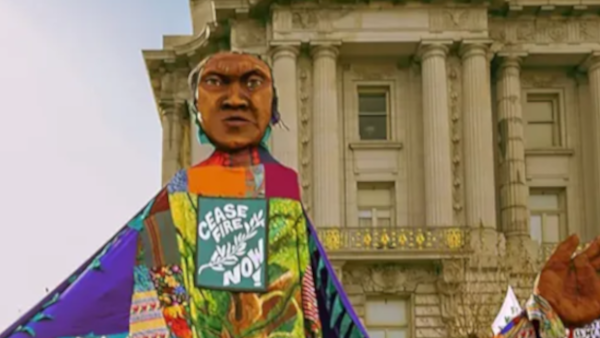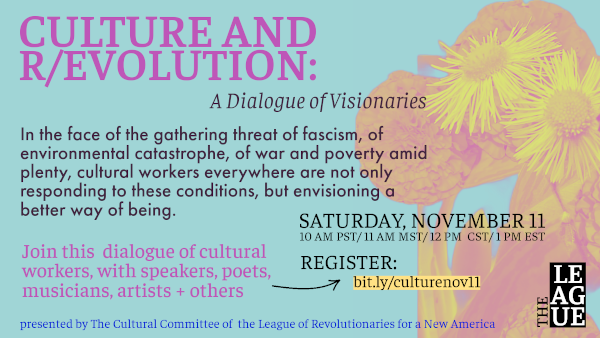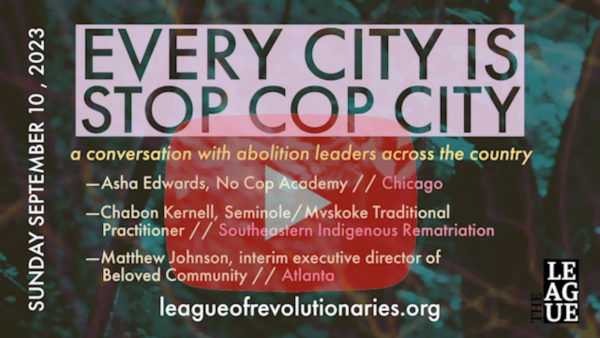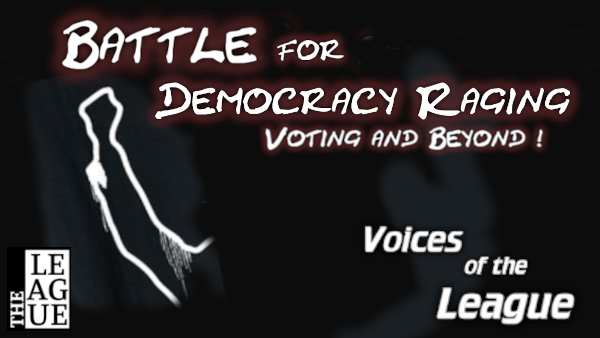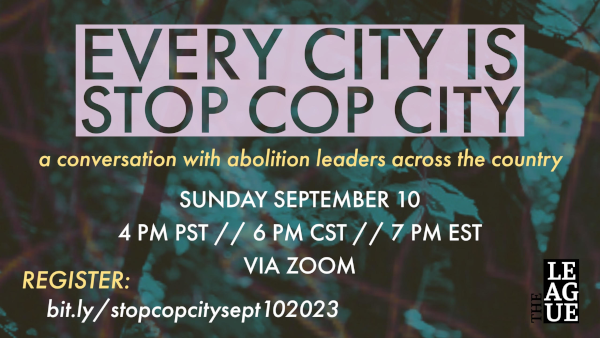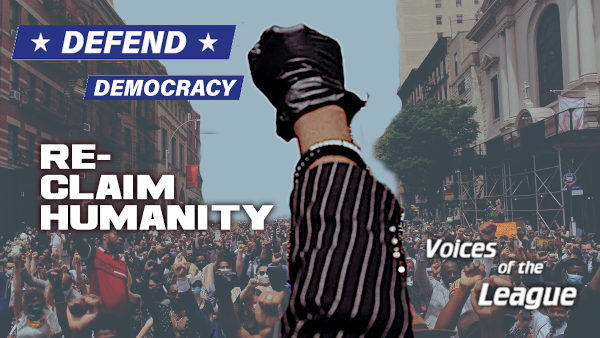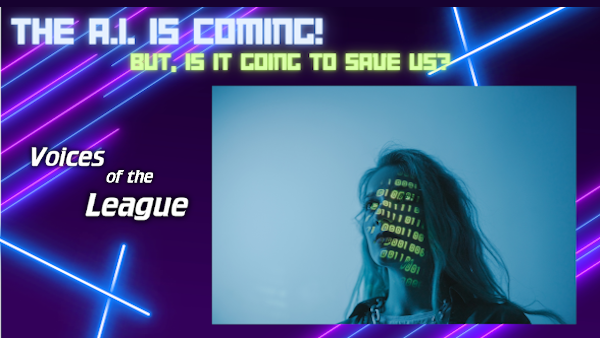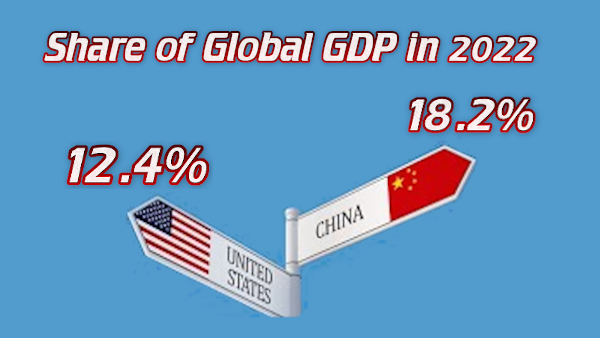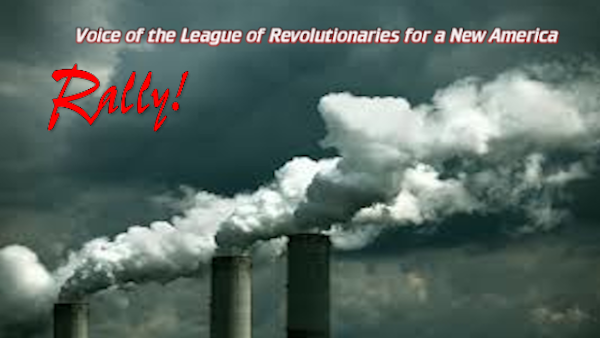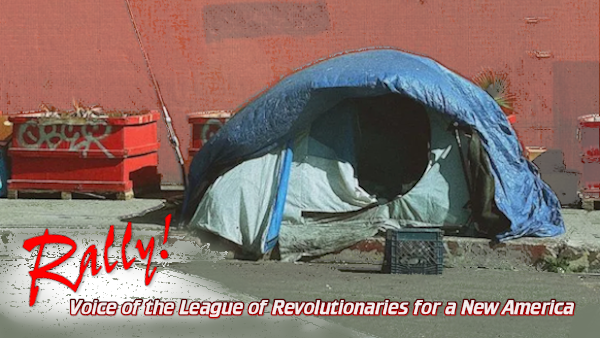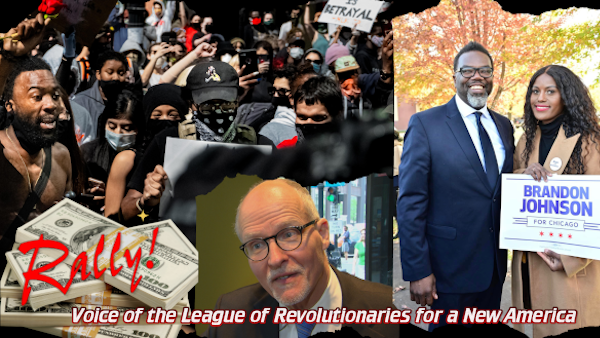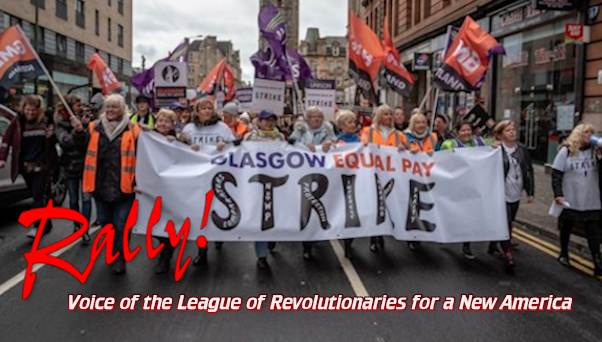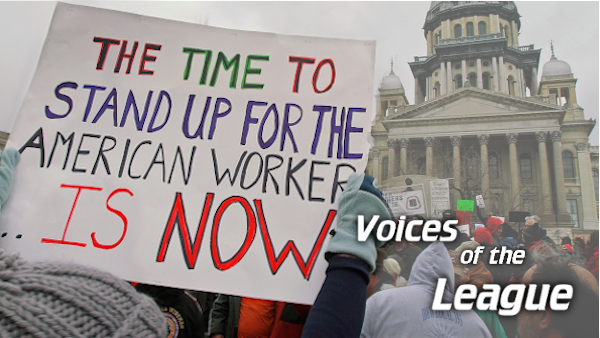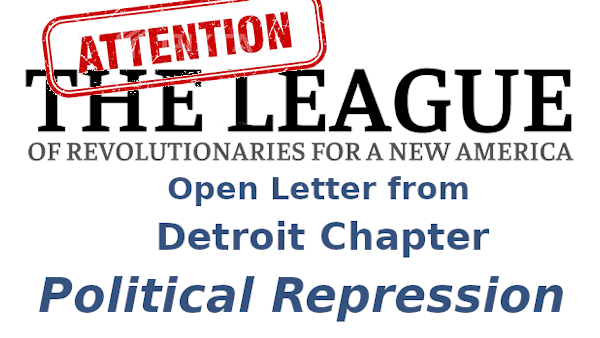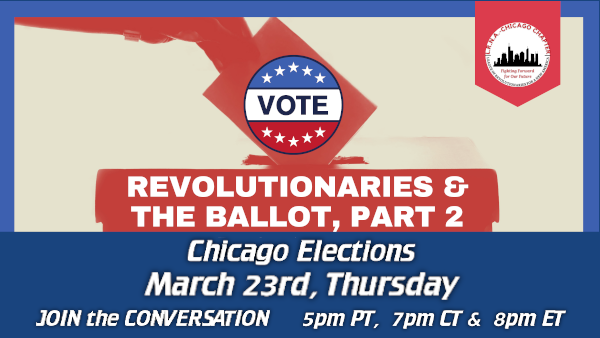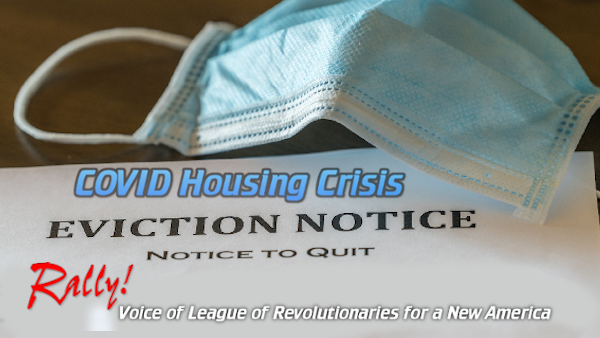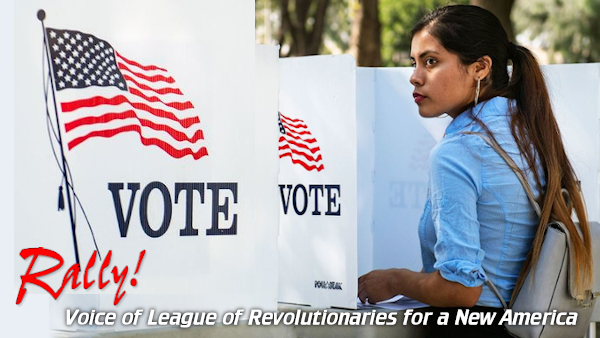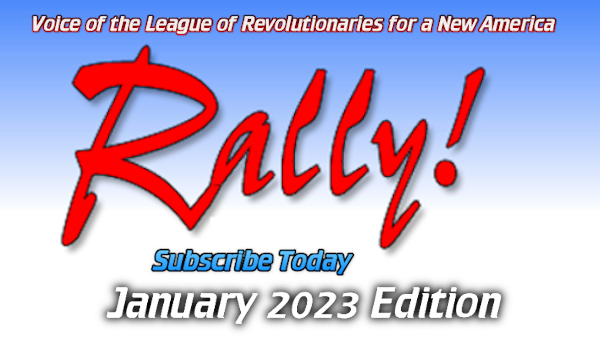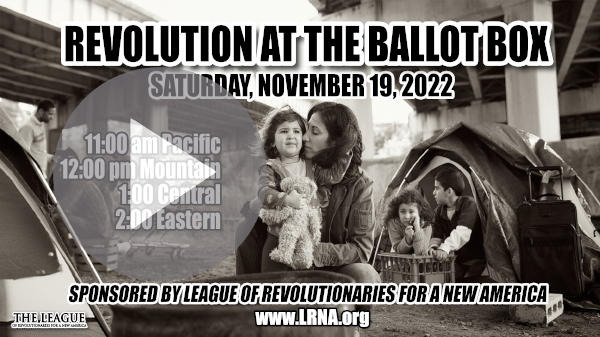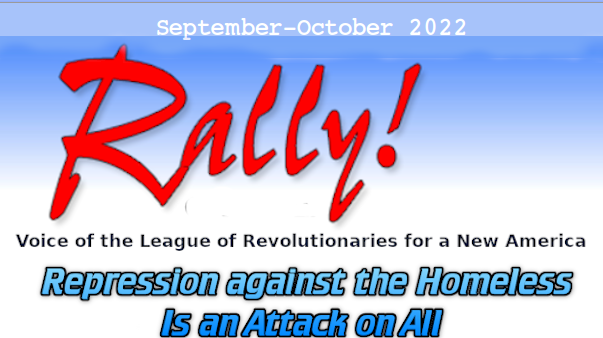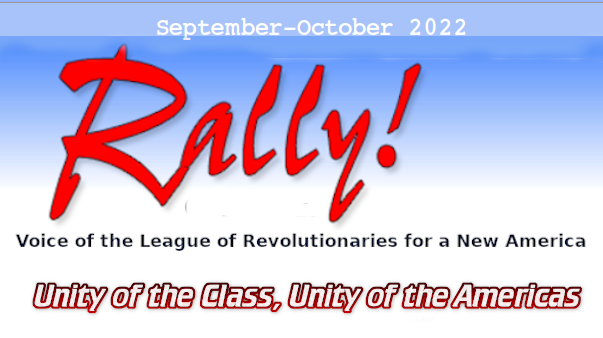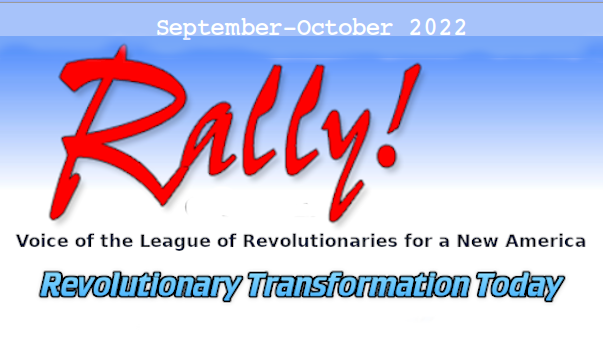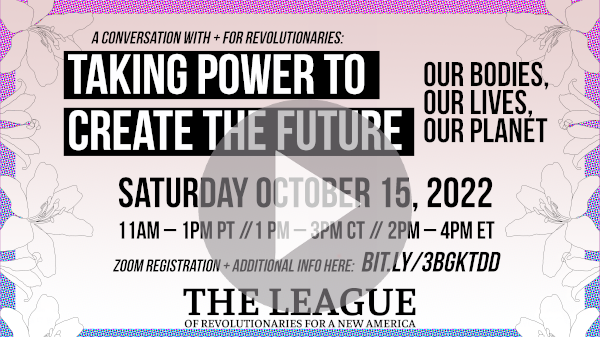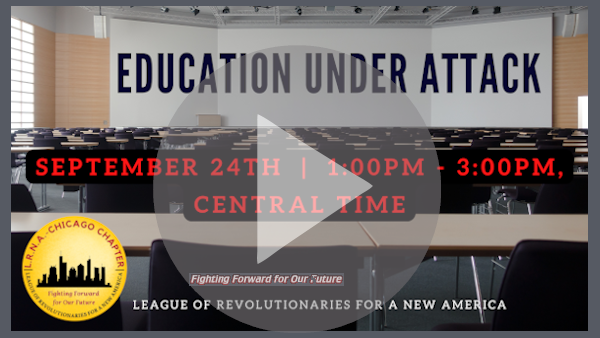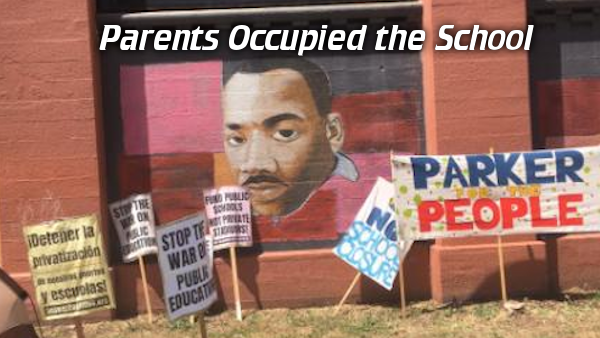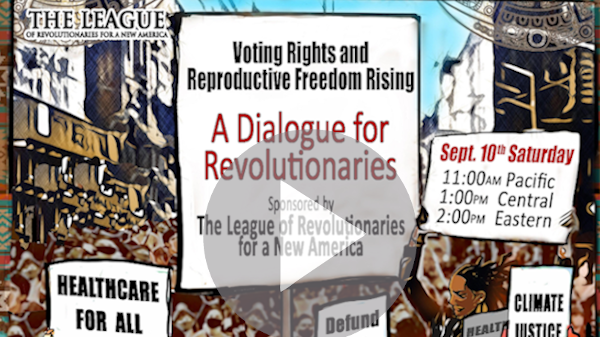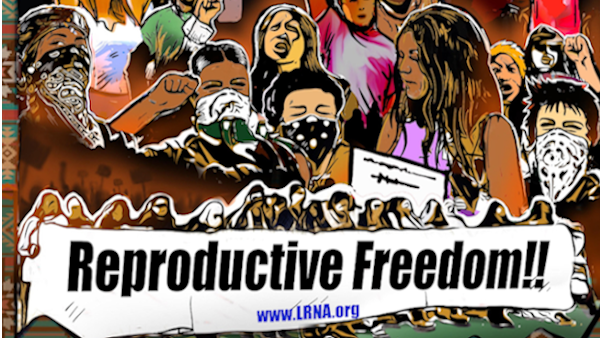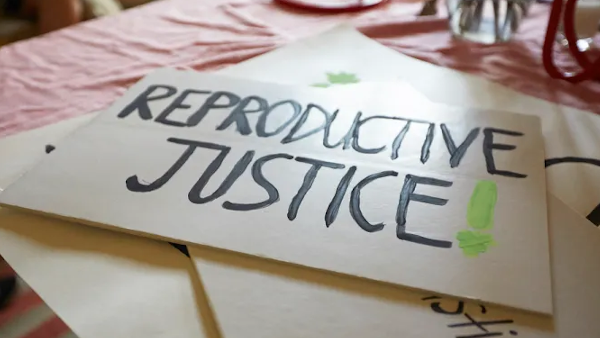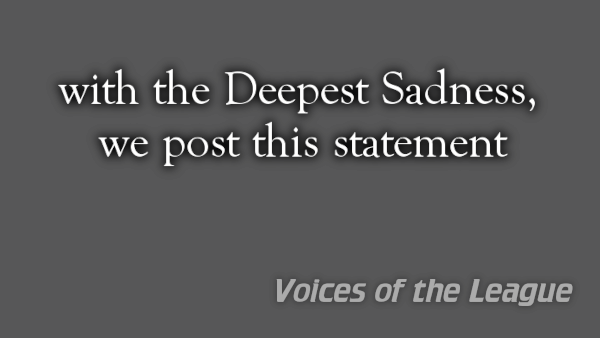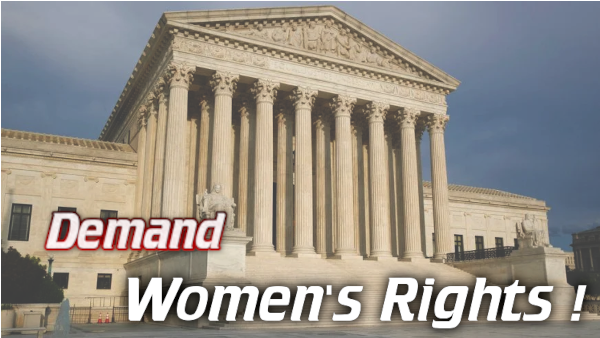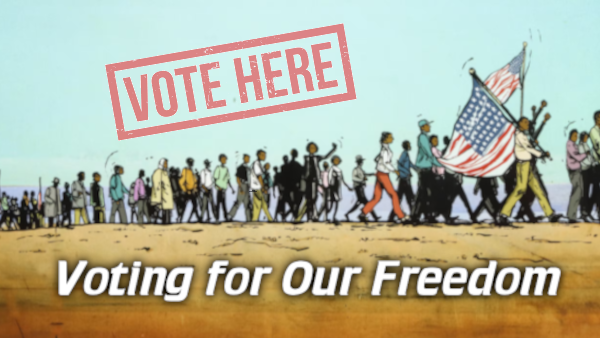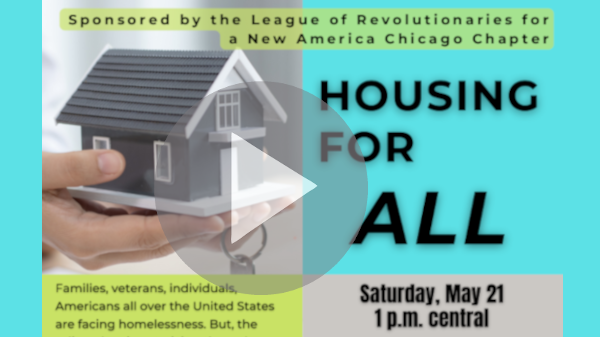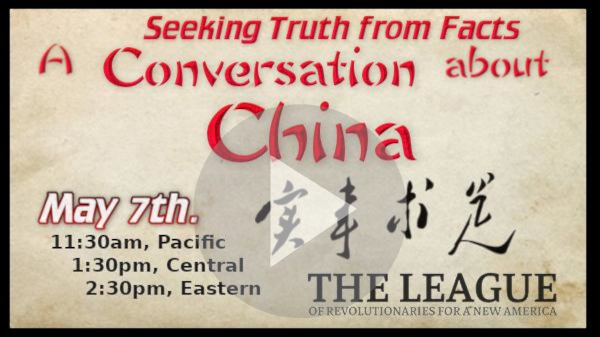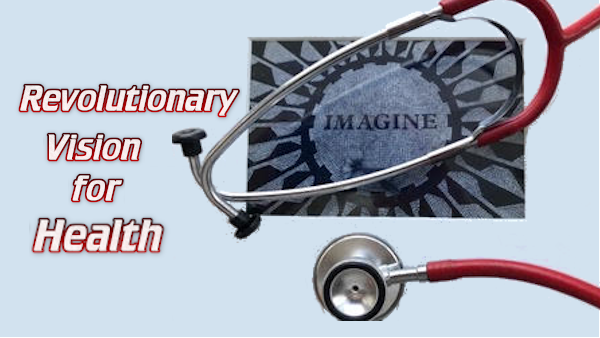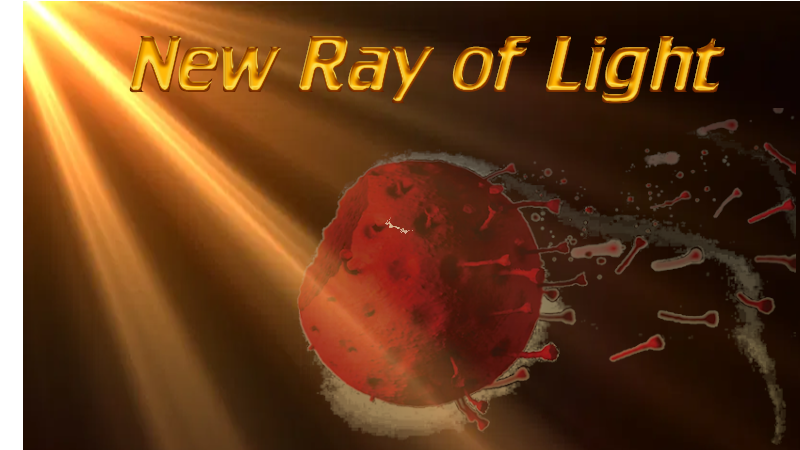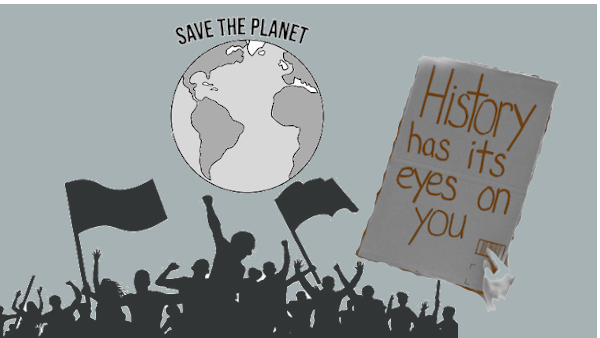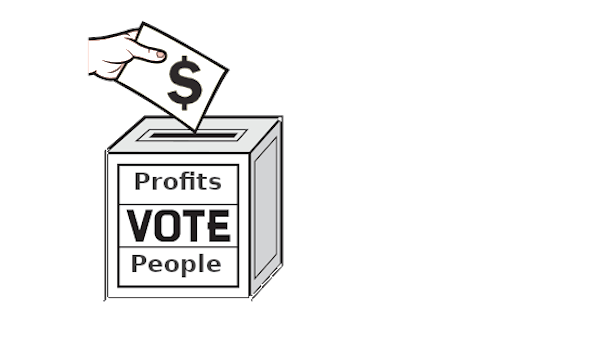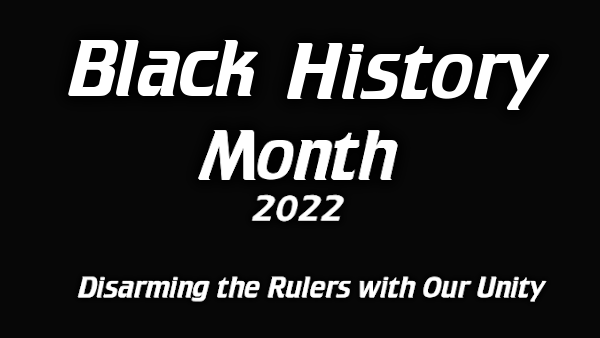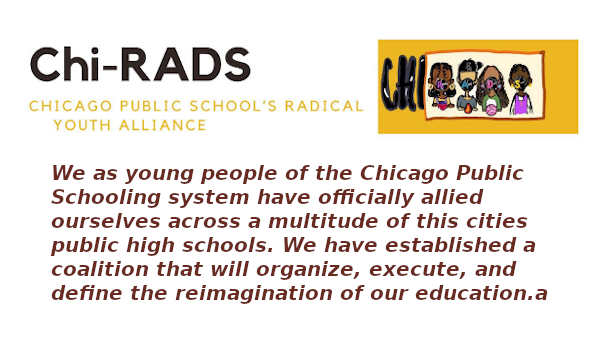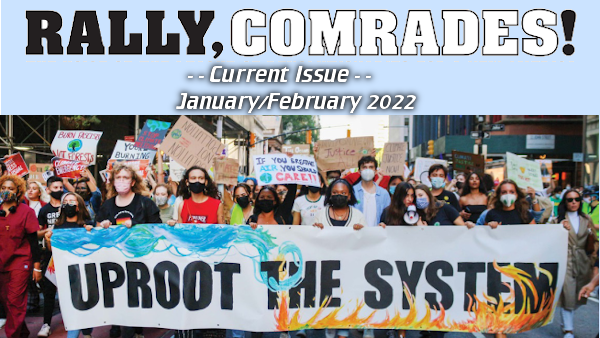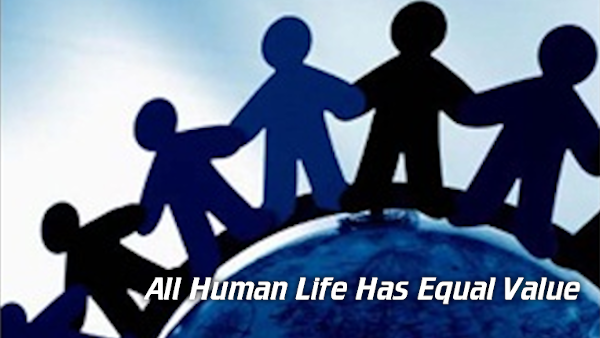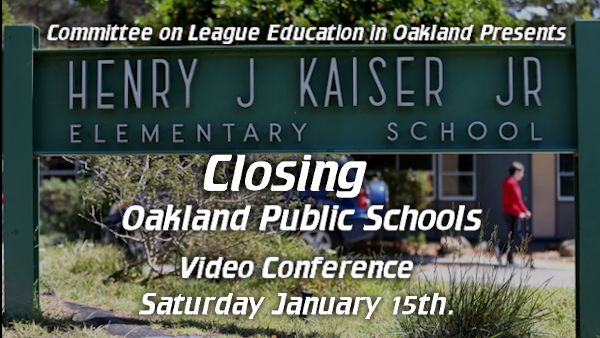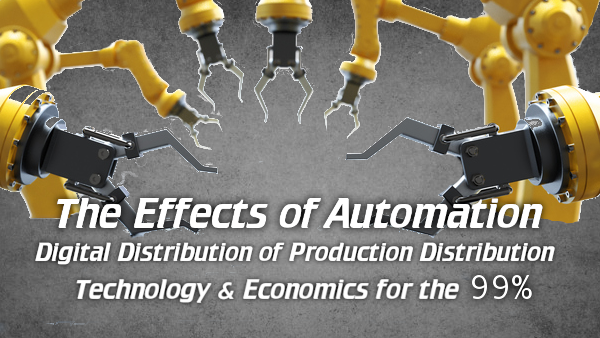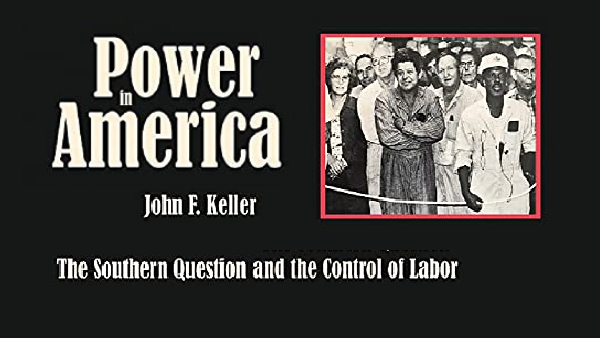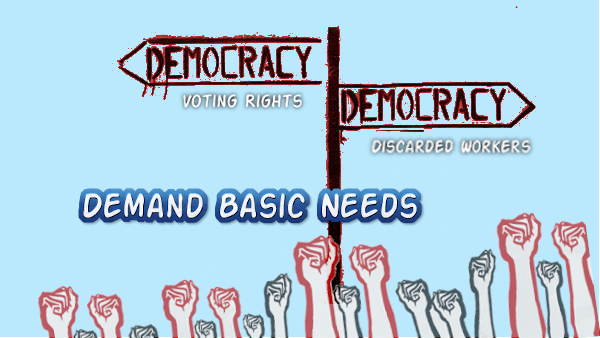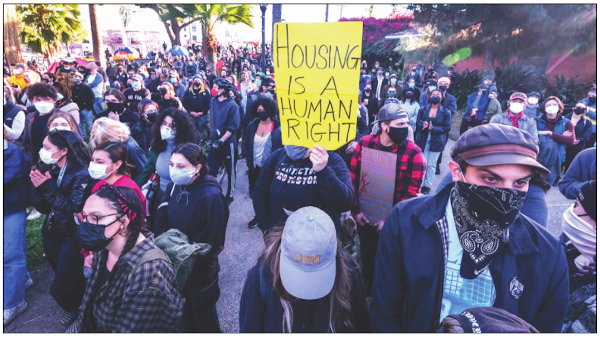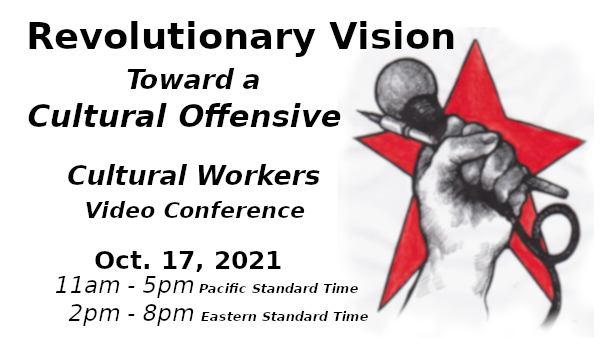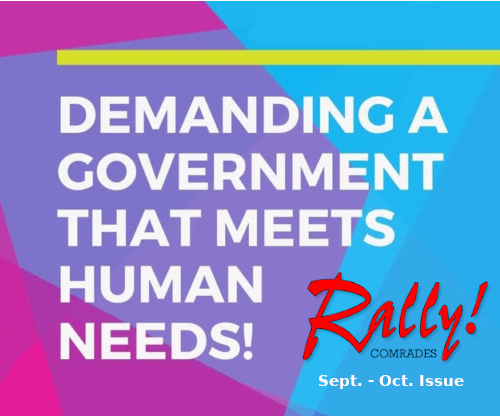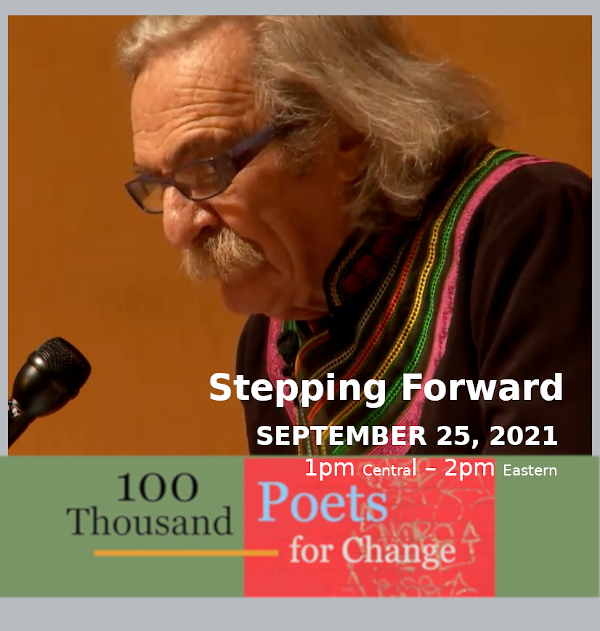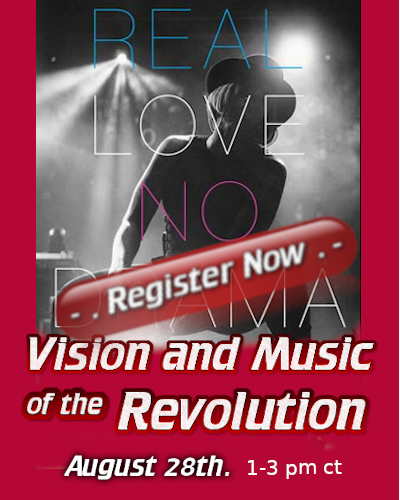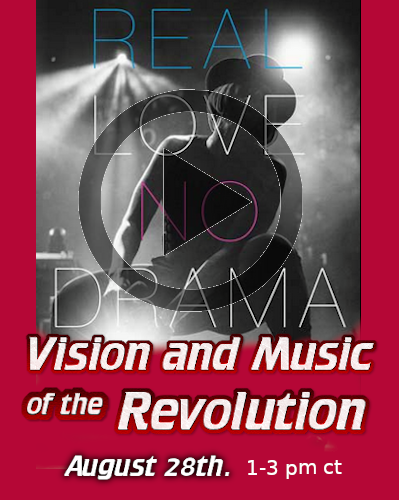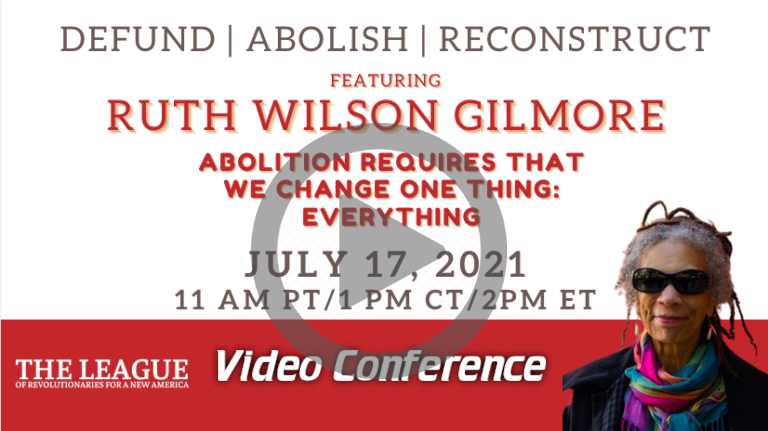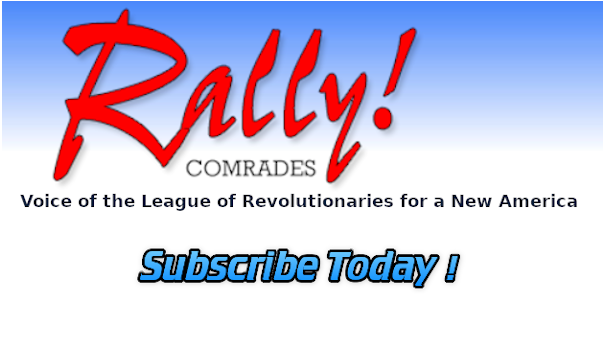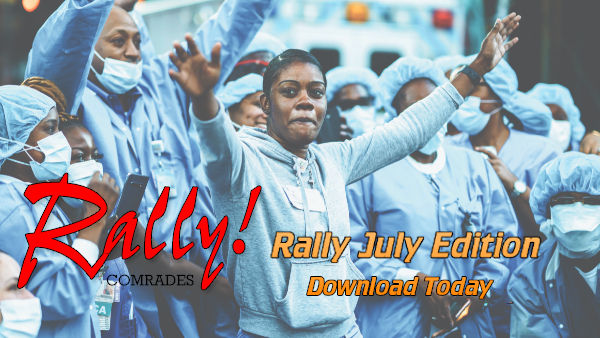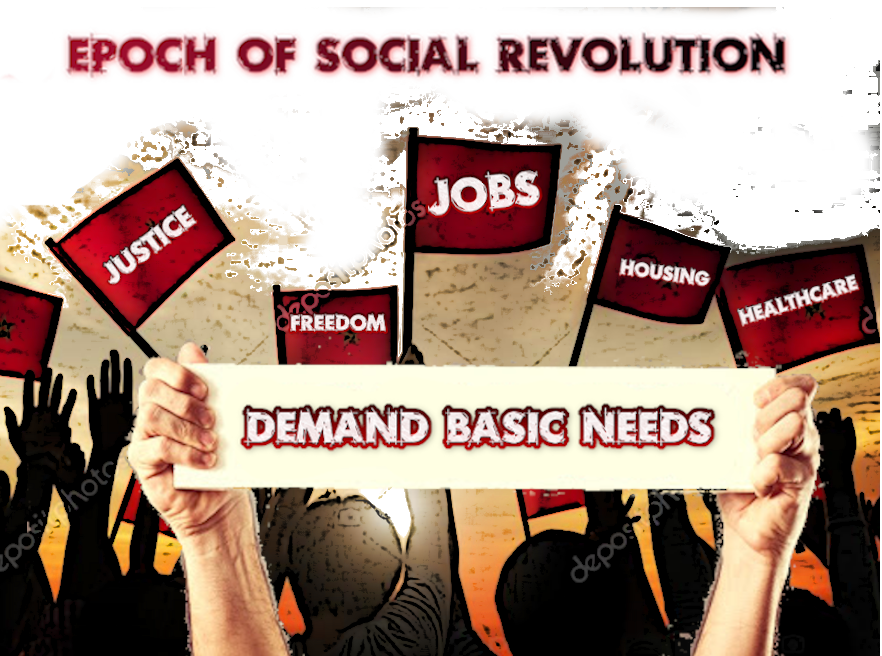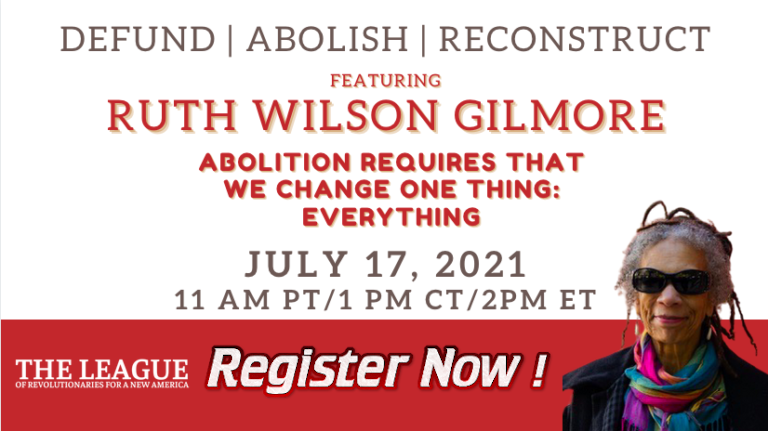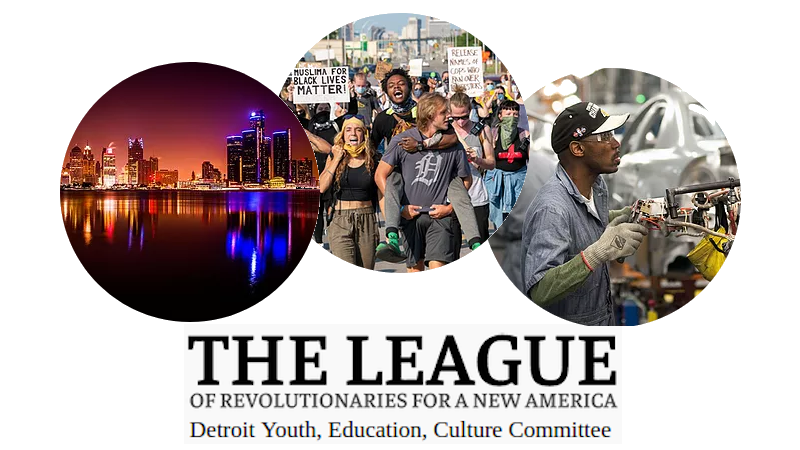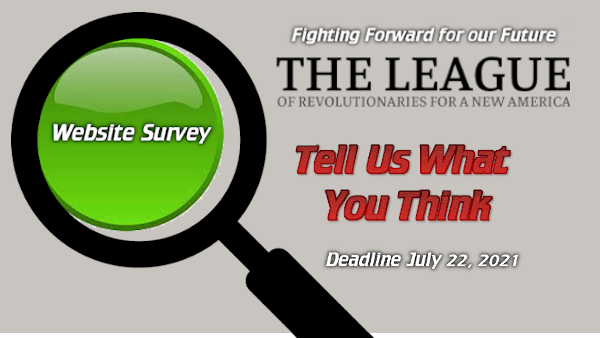Revolutionary Transformation Today
Revolutionary Transformation Today:
Excerpts from the Political Resolution of the League of Revolutionaries for a New America
The global ruling class that controls the tools and technologies of society has pushed humanity and Nature to the brink. For over a decade now, and in the face of a pandemic, the people of the world, including the United States, have been in rising rebellion against the capitalist class. As a result, the ruling class turns to fascism to use anger and fear to divert and confuse the rising working-class movements. Fascism is the open terroristic dictatorship of corporate power, carried out by the State apparatus. It requires a mass base recruited from those who are or could embrace the fascist alternative. The growth of this mass base is apparent today. The fight against fascism is a fight for basic human needs for all, for democracy, for the control of government, and for the future of humanity and the planet. By taking the offensive to defeat fascism, the working class can pass over to the offensive against capitalism and private property, the seedbed of fascism.
Economic exploitation and class society have inflicted harm on Nature to the point where the Earth and its climate can no longer sustain life for many species, including the human one. Murderous pandemics and famine, hurricanes and drought, disastrous heat and fires: All are intensifying inequalities in society. All are wreaking destruction and contamination, compelling massive migration, and igniting wars. Danger and promise face humanity and the earth.
For hundreds of thousands of years humans lived in harmony with Nature. The development of class society transformed property used in common into private property owned by a dominant class that exploited labor and land; resulting in the ever-escalating destruction of natural resources and land and impoverishing the majority of human society.
As U.S. society confronts this destruction, the capitalist class is weaponizing all forms of patriarchy, gender inequality, white supremacy, and every other inequality within society. It agitates political and ideological polarization to the point of violence. At the same time, human society now has the scientific and material wherewithal to overcome all forms of private property and inequality among human beings. Realizing the full, free, and equal potential of human development along with the healing of the planet is within view for the first time in human history.
Colonialism’s plunder and desecration of Indigenous lands and genocidal policies against Indigenous peoples and then capitalism’s industrialized agriculture and production took their toll on Nature, including humanity. From the coal mines of England to the cotton plantations in the U.S. South, from the rubber plantations of Malaysia to the gold mines of Mali, capitalism stole the resources of the world at the expense of Nature and the peoples of the world.
Chipping away at the effects of this destructive rift between human society and Nature is not enough. It is time to get to the cause of the problem, to put an end to all inequalities within society and the assaults on Nature. The only way to heal the destructive rupture is the abolition of private property as the organizing framework of society.
Danger or promise: Which way will society go?
That future will depend on what people understand and do in response to the ravages directed by the global ruling class.
We have never been here before. Society is on the verge of world historic changes. Today the micro-chip is rapidly displacing workers, revolutionizing how the needs of society are produced. Privatewealth accumulation by the few, based on labor of the many, approaches its limits. Investors must find ways to accumulate wealth other than exploitation of labor.
In sum, we are in the midst of an economic revolution that is even bigger than the industrial revolution. The invention of the microchip and electronic production began a process that is step by step replacing the need for human labor, a process that has been sped up by the pandemic. Digital technology, such as computers, apps, artificial intelligence, robotics, and other forms of automation, are replacing and restructuring work, slowly ending capitalism, an economic system that depends on the buying and selling of labor power. Production without labor demands that the goods produced be distributed without money. The method of production is at war with the method of distribution.
Nevertheless, an immense legal and political superstructure protects relationships of private property, allowing investors to abuse Nature for private gain. Legal changes in the U.S. in the last 20 years gave financial institutions access to new areas of investment, including water, copper, and other minerals. Financial investors speculate on the rate at which polar ice and glaciers are melting. Melt or no melt — speculators win. Legal and political changes are putting Nature under the control of corporations and financial investors and speculators.
Technology and the New Displaced Abolitionist Class
In the Spring of 2020, COVID threw as many as 50 million people out of work in the United States, adding to decades of havoc among America’s working class. COVID forced capital to demonstrate how information technology and artificial intelligence can make a remote workforce “normal.” At the same time the pandemic drastically expanded the large segment of underpaid, often part time and contingent workers it now named as “essential” – but whom it treated as disposable. The pandemic laid bare and exacerbated a process already well underway. According to Time magazine, since 1974 about $50 trillion was “transferred” from workers to the top 10% of the population. In the first 12 months of the pandemic, North American billionaires increased their wealth by $1.3 trillion. Vaccine producers Pfizer, Moderna, and BioNTech are making $65,000 every minute from selling their vaccines to the richest countries, while only about 2% of the people in the world’s poorest countries have been vaccinated.
New means of production produce new classes that establish new ways of relating to each other. Robotics and electronics have been disrupting industrial employment for decades. The disruption is accelerating. Every arena of work is affected. Despite rosy reports of a lower unemployment rate, the labor participation rate – those working or looking for work in relation to the entire working age population – is only 61.6%.
Labor replacing technology has not only destroyed whole categories of jobs, but the jobs that are left have been radically restructured. By 2010, about 40% of the workforce was made up of contingent workers – that is, part time workers, on call or temp workers, gig workers, and contract workers. In the early stages of the pandemic, involuntary part time workers totaled 11.9 million.
There are many ways we could describe this very large and diverse section of the working class created by robotics: In all its various levels of precariousness, contingency, and dispossession, and inclusive of immigration status, ethnicity, race, gender or sexual orientation, “disposable” and “expendable” best describe how capital has tried to drive this class to its knees. The rulers are, step by step, taking away every right and material benefit from a growing segment of the population, from democratic rights and education to the air we breathe, water we must drink, housing, and food we need to survive.
But this class is not merely a passive object of ruling class whims. Nothing describes this class’s historic mission, in relation to the private property that has dispossessed it, better than “abolitionist.” Historically, abolitionism has its revolutionary roots in ending U.S. slavery that built global capitalism. Today, our class requires the abolition of the police State and the private property of a corporate class that the State is organized to protect. It cannot satisfy its needs within capitalism. It must abolish all forms of social oppression. It must abolish private property.
The political direction in which this class will move – indeed is moving – is not guaranteed. Horrified by the specter of the growing unity of an abolitionist class, the ruling class concentrates on their twin pillars of domination: setting the conditions for some workers to fight others; and putting in place the mechanisms for the use of force and violence.
The whole society is reacting to this change. The capitalist class, in its full political power, reveals its utter disregard for human life and public safety. As society lurches from crisis to crisis, capitalism faces problems beyond its capacity to solve. The old status quo is collapsing. The center cannot hold. These escalating crises mark a social process that is irreversible.
A developing fascist government, where corporations have become merged with the State, serves the needs of the corporations to protect their ability to amass wealth, their private property. The ruling class will not pay to feed, house, clothe and educate workers they no longer need. How will the people understand this, and how will they respond? While the economic relations develop more or less on their own – that is objectively – the understanding of the people is the subjective side of the process. Here revolutionaries do our work to keep the movement on track. Armed with the understanding that private property must be abolished as the organizing framework of society, this new class uses this knowledge as a guide to action.
The demands for housing, adequate food, medical care, and education – regardless of ability to pay – are not simply utopian ideas. Distribution according to need rather than who can pay is not only possible; it is necessary to resolve the crises we face today, which is why these are demands for the abolition of capitalism, private property, and private profit. That makes the new displaced class growing from the digital economy an abolitionist class. It is a new social force that is uniquely capable of leading the fight to transform society for everyone.
Distribution of goods and services based on need, and the contribution of each person to society according to their ability is the definition of communism. This is a practical solution to the problems facing the new displaced class and society today. Only a cooperative society based on a communist economy can make the rational decisions that will unleash a future of regenerative abundance for humanity and life on earth.
Rising Social Movement
A rising social movement is going beyond simply blaming the corporations. Workers are bringing their demands against the State. Like the water protectors, they are compelled to fight to transform society into public ownership of the new tools of production and communication. Nationalization, i.e., the fight to have the government take over privately owned industries (such as health care, water, or energy) and run them in the interests of the people accelerates this movement that threatens private property and thus terrifies the ruling class. In response to a rising social movement the rulers unleash a fascist offensive. The assault disproportionately targets Black, Indigenous and people of color, as well as women and LGBTQIA people. Systems of domination like the patriarchy are an integral part of the capitalist structuring of society, and an important pillar of fascist ideology. Re-entrenchment of the patriarchy always accompanies fascist advance.
The U.S. Supreme Court decision striking down Roe v. Wade will disproportionately affect low-income women and women of color who will bear the brunt of this ruling. This is another fascist thrust that attacks not only reproductive health and justice but also the very notion of bodily autonomy.
The Supreme Court’s decision imposes the doctrine of “states’ rights” on the country. The failure of Congress and the Courts to protect the right to vote and to extend the Voting Rights Act confirms this intention.
The escalating social crises have remolded the class of displaced workers more and more into a social force that is driving forward an objective revolutionary movement. The spiraling consequences of technological unemployment make it clearer and clearer that we cannot solve the rest of our social problems unless we meet the demands of those being rejected by the private property economy.
It is time to get to the cause of the problem, to put an end to the inequalities within society and the assaults on Nature. What stands in the way of our displaced and abolitionist class — and indeed, the whole working class — as it strives to meet its basic needs? The rule of corporate private property and the political power that enforces it. This is the last stand of the ruling class.
Politically Coalesce the Broad Social Struggle
Today all sections of society are reacting to the disruption of its economic foundation. Institutions and ideologies that, in the past, held society together can no longer do so when its foundation is crumbling. The shreds of our democracy can barely hold this country together. The broad movement has to fight for that democracy. As we struggle within that broad front, we aim to develop the political consciousness that this ruling class is not fit to rule, and that it can be and must be displaced.
The League’s mission is to unite with other revolutionaries around the demands of the working class, especially the class of displaced workers, and show how the solution is a cooperative, communist society, where social wealth is owned in common and distributed according to need.
To accomplish this mission, the League’s tactic is to carry out the struggle for political unity where the growing equality of poverty exists. The fight for class consciousness and unity has to be carried on by the revolutionaries throughout the country, within every section of the working class. As workers begin to gain class consciousness, they will politicize those around them. Today the workers can take no steps forward apart from resolving the problems that confront the displaced as a whole, unity based on what is practical, real, and possible.
Our strategic focus is on the political unity of the new class. Consciousness lags behind the objective changes we are observing. Recognition of the necessity for that kind of unity is a result of consciousness. The task will not be easy because we are confronting centuries of national, ethnic, and racial divisions. They can only be overcome through intellectual struggle linked to daily experience. Every struggle of the class must be used to explain the meaning of their activity, to show them a vision of the cooperative society that is possible and a strategy to get there.
It is in the process of the movement’s realization that the State does not represent its interests that demands for new solutions arise. Revolutionaries work within this process to develop the stages of consciousness along the line of march — from scattered economic struggles, to united political struggles against the State. Within the fight for the immediate aims of the workers, revolutionaries keep their sights on the solutions.
The solution, the actual program of the new displaced class is the abolition of private property relations — economic and social relationships based on private profit instead of human need. This abolition of private property is frequently referred to as communism. This communism is neither an ideal to which reality will have to adjust itself nor an idea to which people are to be won. It is neither an ideology nor a specific political form of the last century. It is a practical and necessary transformation that can and must be achieved if humanity and the planet are going to survive.
Revolutionary transformation is possible when the angry, displaced, and terrorized cease seeing themselves simply as the victims of their rulers. When we act with vision and political clarity to secure the goals of our struggle, we become active agents of history who can secure the imperiled future of humanity and the planet. The LRNA commits its energies to making that possibility a reality.
September/October 2022 vol.32. Ed5
This article originated in Rally, Comrades!
P.O. Box 477113 Chicago, IL 60647 rally@lrna.org
Free to reproduce unless otherwise marked.
Please include this message with any reproduction.






